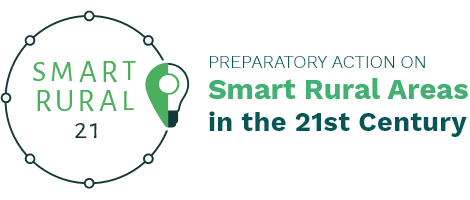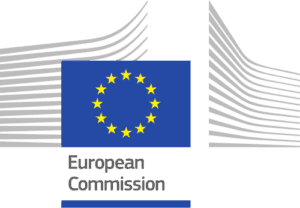Smart Solutions
Precision viticulture
The use of sensors to inform decisions on the use of water and fertiliser and to optimise timings in the growing and harvesting of grapes.
Implemented in : Nemea, Region of Corinthia
Country : Greece
What’s the solution?
Precision viticulture involves the use of new and emerging technologies, including sensors, to collect information and data on various parameters of the vines and the terroir that affect vines’ growth. Global positioning systems (GPS), meteorologic and other environmental sensors, proximal sensors, as well as, satellite and airborne remote sensing to estimate LAI (Leaf Area Index), Normalized Difference Vegetation Index (NDVI) and other vegetation indices, and geographic information systems (GIS) assess and respond to the vineyard variability.
Sensor data is recorded remotely, pre-processed and analysed in order to correlate it to other information about the vines, including phenological data and grape and wine chemical analysis. In vineyards, emphasis is given during the summer months, May through September, when grapevines grow and produce grapes.
This informs an evaluation of soil and plant characteristics and the production of maps that are then used to inform practical decisions in terms of watering, application of fertiliser and harvesting. The aim is to improve grape and wine quality at the same time as optimising the use of resources such as fertilisers, chemicals, seeds and irrigation for sustainable crop production.
What makes it smart?
The smart components of Precision Agriculture are the implementation of smart farming technologies in primary production to optimise production and lower costs through evidence-based decision making.

How is the solution implemented?
- Define the experimental plan
- Define the experimental areas
- Purchase/rent equipment
- Data collection on the field
- Replication each growing season (for at least two to three years)
- Data pre-processing and analysis
- Mapping and reporting
- Support agricultural decision-making (watering, fertilizers, harvesting etc.)
In what local context has it been applied?
The Nemean region, situated just 115 kilometres southwest of Athens, is linked to numerous myths and traditions. Its primary industry is agriculture and it is the hub for several small villages circling it.
Nemea is the most important wine-making area of the Peloponnese in southern Greece. The mountains and valleys surrounding the small village of Nemea have been producing wine for centuries, mostly from the native Agiorgitiko grape. A wide range of styles are made from this red grape variety, from rich, age-worthy dry wines to lighter, sweeter examples.
In 1971, the area of Nemea was designated as a Protected Designation of Origin (PDO) zone and includes Nemea and 16 villages spread at an altitude of 250 to 800 meters.
Who was behind the implementation?
The Agricultural University of Athens (AUA) initiated the process to test precision viticulture techniques in Nemea, along with local producers and wineries.
What was the local journey?
A detailed plan and experimental protocol was defined by AUA including the definition of the exact areas of deployment, methods, technical requirements, equipment to be used for data collection and activity calendar.
Two test sites were chosen for data collection. These are situated in the regional unit of Corinthia, in the north-eastern part of Peloponnese, Greece:
- Palivou Estate for winemaking production.
- Fasoulis Estate for table grapes production.
The boundaries of the vineyards were geo-referenced using GPS technology at the very beginning of the first year, as soon as the experimental fields were chosen. Management zones were formed using soil electrical conductivity (ECa) mapping, assisted by elevation mapping using the RTK-GPS. Soil, weather and farming data were continuously collected.
Vegetative indices measurements for NDVI were carried out by fitting the equipment to a winegrowing tractor. Canopy characteristics and vegetation indices were recorded with the use of Crop Circle, and SpectroSense2 sensors six times per season/summer starting in early May, so that the phenological development of the grapevine, which is divided into nine principal growth stages, was followed in the best way.
UAV (Phantom 4 Pro) aerial flights were undertaken every fifteen days and captured images with a multispectral camera for the calculation of vegetation indices and map production.
Two Vantage Pro 2 weather stations were installed with a rain sensor, air temperature sensor, air humidity sensor and anemometer to measure wind speed and direction.
Some of the qualitative and quantitative characters of the grapevines, such as pH, soluble solids, total titratable acidity, antioxidant capacity by DPPH, FRAP assay, and amino acids, were tested three times over a season. Finally, the rest of the qualitative and quantitative characteristics were assessed at the end of each season, when harvesting. Similarly, yield mapping was also be estimated once per year.
On the basis of this information, robust predictive models for the yield and quality of the harvested product will be developed and made available to be used by the producers the following years for decision-making.
What have been the main outputs & results?
- Selective harvesting
- Improved table and wine grape yield and quality for optimising post-harvest treatments of table grapes and winemaking
- Reduction in fertilizer and herbicide use and natural resources
What does it bring the village/community?
Precision viticulture has the potential to increase productivity, more efficient and environmentally friendly operations, economic gains and improved quality of life, and increase the competitiveness of the local wine industry, among others. Increasing the overall crop value through better timing of the harvest, has as a result an increase in the value of the wine produced to the benefit of the growers, the winemakers and the local community.
The most important contribution is to the social fabric in rural communities, where increased revenues for winemakers and a reputation for better quality wine can have a significant impact on the community so increasing the local wealth and quality of life.
What’s needed
Financial resources
Main types of cost:
Financial needs:
Set up / Investment costs: 40 000 EUR
The initial cost for the equipment are around 30,000-50,000 euros (AUA already owned the sensors)
Satellite images used are free of cost from the Copernicus Open Access Hub
Staff according to the size of the area (in this case it was included in the total budget funded within the EU project BigDataGrapes)
Ongoing costs: the approximate total cost of applying Precision Agriculture and providing it as a service to the producers, from data collection to final reporting, is 10,000 euros per ha per year including maintenance, human resources, travel cost, etc
Funding received:
| Source | Amount | Funded |
|---|---|---|
| European Union – Horizon 2020 project entitled BigDataGrapes: Big Data to Enable Global Disruption of the Grapevine-powered Industries | 300,000 € | All |
Human resources
Human capacity needs depends on the number and the size of the selected test sites.
For the data acquisition: A tractor driver is needed in order to carry the mounted equipment on the tractor within the field to collect data. Another two people are needed to carry any handheld equipment and a certified drone pilot to perform the data collection above ground. During the harvesting, teams of two people record the qualitative and quantitative measurements of production.
For the data pre-processing and analysis: A data analyst with good knowledge of geostatistics is essential and an “agronomist” to translate the data into decision-making reports.
Physical resources
• Electrical conductivity ground sensor, such as EM38
• Active crop canopy sensor, such as Crop Circle ACS-470, that provides basic reflectance information from plant canopies and soil as well as classic spectral vegetative index data.
• Passive crop canopy sensor, such as SpectroSense2+ GPS used to estimate LAI (Leaf Area Index) and NDVI vegetation indices.
• Weather station with rain sensor, anemometer to measure wind speed and direction, air temperature sensor, air humidity sensor
• A drone with multispectral and/or thermal camera.
What to do…
- Determine the producer’s individual goal and needs to be achieved.
- Determine the causes and extent of variability in the field.
- Establish those tools that are critical in meeting the above needs.
- Understand the requirements needed to implement the new precision tool with maximum success. Questions on whether that tool could be used for multiple crops, who will run it, the knowledge required to deploy it and its coverage per piece of a farm should be considered so as to get success in precision farming technology.
- Consult experts in order to get guidance regarding software systems and machinery capabilities and determine which tool I right for you.
- Address underperforming areas.
- Produce soil conductivity maps, elevation maps and yield maps.
and not to do
- Do not be impatient. Successful implementation of precision agriculture is not a quick fix thing, but rather, it is usually an evolving process that might not show immediate results.
- Do not get disappointed. Adding a whole new technology to farm may take a while to adapt. New farming operations may require slight adjustments. Readjust your adoption timelines from time to time to fully get the system needed to obtain the desired results.
- Do not hesitate to consult and explore the many existing precision agriculture opportunities and technologies.

